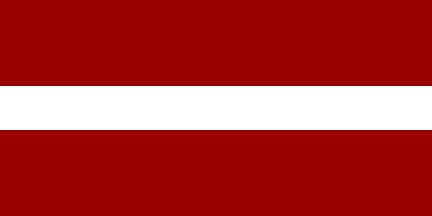.gif)
by Gvido Petersons, 9 April 2002

Last modified: 2003-11-28 by dov gutterman
Keywords: latvia | coat of arms |
Links: FOTW homepage |
search |
disclaimer and copyright |
write us |
mirrors
.gif)
by Gvido Petersons, 9 April 2002
2.gif)
by Zachary Harden, 15 November 2001
1.gif)
by Zachary Harden, 15 November 2001
See also:
From <www.latinst.lv>:
The Latvian national coat of
arms was formed after the proclamation of an independent
Latvian Republic and was specially created for its independent
statehood. The national coat of arms combines symbols of Latvian
national statehood as well as symbols of ancient historical
districts. The sun in the upper part of the coat of arms
symbolises Latvian national statehood. A stylised depiction of
the sun was used as a symbol of distinction and national identity
by Latvian riflemen – latviesu strelnieki – recruited
into the Russian imperial army during WWI. During WWI the sun
figure fashioned with 17 rays that symbolised the 17 inhabited
Latvian districts. The three stars above the coat of arms embody
the idea of the inclusion of historical districts (united Kurzeme
– Zemgale, Vidzeme and Latgale) into a united Latvia.
Culturally historical regions are also characterised by older
heraldic figures, which already appeared in the 1600's. Kuzeme
and Zemgale (Western Latvia and South-western Latvia) are
symbolised by a red lion. The lion appears as early as 1569 in
the coat of arms of the former duke of Kurzeme. Vidzeme and
Latgale (North-eastern Latvia and South-eastern Latvia) are
symbolised by the legendary winged silver creature with an
eagle’s head, a griffin. This symbol appeared in 1566, when
the territories known today as Vidzeme and